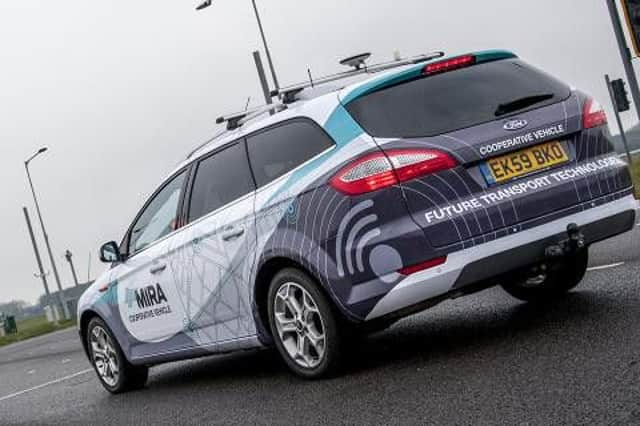Utopian future of driverless cars questioned by Leeds University expert


However new research led by an expert from Leeds University has suggested it could actually have the opposite effect if it results in lots more people choosing to travel by car.
The development of autonomous driving systems is on the increase since the unveiling of Google’s driverless car in 2012.
Advertisement
Hide AdAdvertisement
Hide AdAnd improved energy efficiency because of a better traffic flow has been touted as one of the technology’s key advantages.
However a new study led by a Leeds University academic has questioned this prediction.
Dr Zia Wadud, associate professor at Leeds’ Faculty of Engineering and a research group leader at its Institute for Transport Studies, said: “There is no doubt that vehicle automation offers several efficiency benefits, but if you can work, relax and even hold a meeting in your car that changes how you use it.
“That, in turn, may change the transport equation and the energy and environmental impact of road transport.
Advertisement
Hide AdAdvertisement
Hide Ad“Car owners might choose to travel by train to relatively distant business meetings because the train allows them to work and relax. The need to drive is part of the cost of choosing the car, just as standing on a cold platform is part of the cost of the train.
“If you can relax in your car as it safely drives itself to a meeting in another city that changes the whole equation.”
The study, which also involved Washington University and Oak Ridge National Laboratory, uses analysis of self-driving technology along with data on car and truck use, and vehicle running costs to model the impact on energy demand of automation on American roads by 2050.
More efficient computer-directed driving styles could lead to a 20 per cent reduction in energy use while improved traffic flow and reduced jams may lead to a four per cent reduction in energy use.
Advertisement
Hide AdAdvertisement
Hide AdCars driving in convoys could create aerodynamic energy savings of between four per cent and 25 per cent while lighter vehicles could save between five and 23 per cent.
There would also be less risk of accidents and there will be less emphasis from car buyers on high performance reducing energy use of up to 23 per cent.
But these very benefits could lead to an increase in the popularity of driving, meaning more cars on the roads and a five to 60 per cent increase in car energy consumption, the study found.
The study is published today in the journal Transportation Research Part A.